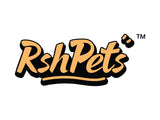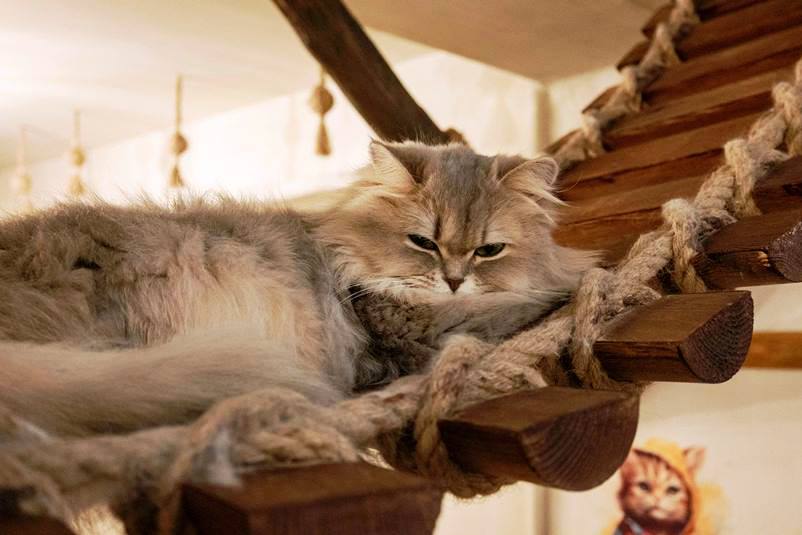In this Article
Wall-mounted cat complexes have grown in popularity as a chic and functional solution for cat owners who want to combine a pet-friendly environment with stylish home design. These innovative units provide vertical space for cats to climb, scratch and lounge, while seamlessly integrating into modern interiors. For cat owners and designers alike, choosing the right wall-mounted litter box requires balancing aesthetics, functionality, safety, and cat behavior. This article offers expert advice on choosing a stylish wall-mounted cat unit that meets the needs of both cats and their design-conscious owners.
Why Choose a Wall Mounted Cat Tree?
Cats are natural climbers, driven by the instinct to perch on high places for safety, observation and play. Wall-mounted cat complexes cater to these instincts by providing vertical territory without sacrificing floor space, making them ideal for small apartments or homes where space is at a premium. Unlike traditional cat trees, which can be bulky and visually intrusive, wall-mounted systems allow for customization and integration into a home's aesthetic, appealing to design-savvy pet owners.
From a designer's perspective, these complexes are an opportunity to create functional art. They can enhance the visual appeal of a space while serving a practical purpose, in keeping with 2025 interior design trends that emphasize multifunctionality and personalization. However, choosing the right system requires an understanding of cat behavior, material quality, installation requirements, and design coherence.
Understanding Feline Needs
1. Vertical space and instinctive behavior
Cats thrive in environments that allow them to climb, perch, and survey their surroundings. A wall-mounted complex should include platforms at varying heights to mimic a natural environment. Experts recommend including perches at least 5-6 feet high, as cats prefer elevated places for security and dominance. Make sure the design includes multiple levels to encourage jumping and exploration, which promotes physical exercise and mental stimulation.
2. Scratching surfaces
Scratching is a natural behavior for cats to mark territory, maintain claw health, and relieve stress. A stylish wall unit should incorporate durable scratching surfaces, such as sisal rope or carpet panels. Choose materials that can withstand heavy use without fraying, as inferior finishes can compromise both functionality and aesthetics.
3. Resting and hiding places
Cats need comfortable places to rest or hide. Look for kennels with cushioned platforms, hammocks, or enclosed dens. These areas should be appropriately sized - typically 12-18 inches wide for lounging and at least 12 inches deep for hiding - to comfortably accommodate cats of various sizes.
4. Accessibility for all cats
Consider your cat's age and mobility. Kittens and healthy adults can handle steep climbs and narrow platforms, but older cats or those with mobility issues need wider, lower platforms and gentler slopes. Modular systems that allow for adjustments over time are ideal for long-term use.
Design Considerations for a Stylish Look
1. Material Selection
The materials used in a wall-mounted cat unit have a significant impact on its aesthetics and durability. Popular options in 2025 include
- Wood: Natural wood finishes such as oak, walnut or bamboo add warmth and sophistication. Choose sustainably sourced, non-toxic wood with a smooth finish to prevent splinters.
- Metal: Sleek metal frames in matte black, brushed gold, or chrome are in keeping with minimalist and industrial design trends. Make sure metal components are rust resistant and securely anchored.
- Fabrics: High-quality, stain-resistant fabrics such as microfiber or felt for cushions and scratching surfaces enhance comfort and durability. Neutral tones or bold accent colors can tie the unit into the room's color scheme.
- Acrylic or glass: Clear or frosted acrylic shelves create a modern, airy look perfect for contemporary spaces. Make sure these materials are shatterproof and rated for a cat's weight.
2. Color and Finish
Choose colors that complement your home's palette. Neutral tones like beige, gray or white blend seamlessly into most interiors, while bold colors like teal or mustard can serve as statement pieces. Textured finishes, such as matte or wood grain, add depth without overwhelming the room. Avoid glossy finishes that can show scratches and wear over time.
3. Integration with Home Decor
A wall-mounted litter box should feel like an extension of your home decor. For Scandinavian-inspired interiors, opt for clean lines and natural materials. For bohemian spaces, incorporate woven textures or playful shapes. Mid-century modern homes benefit from angular designs and warm wood tones. Customizable systems allow you to mix and match components to match your aesthetic vision
4. Space Optimization
Carefully measure your available wall space. A well-designed complex maximizes verticality without cluttering the room. For small spaces, consider a linear arrangement with a few key elements, such as a scratching post, perch, and hammock. Larger spaces can accommodate more expansive configurations with multiple platforms and tunnels. Make sure the layout doesn't interfere with aisles or furniture placement.
Safety and Installation
1. Structural Integrity
Safety is paramount when installing a wall-mounted cat complex. Each component must be securely anchored to withstand a cat's weight and dynamic movements, such as jumping or pouncing. Look for systems with heavy-duty brackets and screws designed for drywall, plaster, or masonry. If you're not sure about the strength of your wall, consult a professional installer or structural engineer.
2. Weight Capacity
Check the manufacturer's weight specifications. Most complexes are designed to support 15-25 pounds, which is sufficient for one or two average-sized cats. For multi-cat households or larger breeds such as Maine Coons, choose reinforced systems with higher weight limits.
3. Installation Process
Installation can be a do-it-yourself project for those with basic tools and experience, but complex designs may require professional assistance. Make sure the system comes with clear instructions and all necessary hardware. For renters, look for complexes with removable or non-invasive mounting options to avoid damaging walls.
4. Maintenance
Choose materials that are easy to clean and maintain. Removable fabric covers for cushions make washing easier, while smooth surfaces like wood or metal can be wiped down. Regularly inspect the complex for loose screws or worn materials to ensure continued safety.
Top Trends in Wall-mounted Cats for 2025
1. Modular designs
Modular systems are a top trend, allowing owners to reconfigure or expand the complex as needed. These designs are ideal for adapting to a cat's changing needs or a home's evolving decor. Brands like Catastrophic Creations and The Refined Feline offer customizable kits with interchangeable components.
2. Environmentally friendly materials
Sustainability is a major concern in 2025. Look for cathouses made from recycled or sustainably sourced materials, such as reclaimed wood or biodegradable fabrics. Non-toxic finishes and adhesives are essential for your cat's safety.
3. Smart features
Technology is making its way into pet furniture. Some wall units now include built-in sensors to monitor your cat's activity or LED lighting for ambiance. While not required, these features can add a futuristic touch to tech-forward homes.
4. Art-inspired designs
Designers are treating cat complexes as sculptural elements. Geometric shapes, asymmetrical layouts and artistic finishes make these structures focal points. For example, a series of hexagonal perches arranged in a honeycomb pattern can double as wall art.
Practical tips for selection
1. Assess your cat's personality
Every cat is unique. A shy cat may prefer enclosed areas, while an adventurous cat may prefer open platforms. Observe your cat's habits-does she like to jump, lounge, or scratch? and choose a complex that accommodates her preferences.
2. Budget Considerations
Wall-mounted cat complexes range from $50 for basic setups to over $500 for premium, custom designs. Set a budget and prioritize features such as durability and safety over purely aesthetic elements. High-quality materials often justify a higher initial cost due to their longevity.
3. Read reviews and research brands
Check customer reviews and expert recommendations to gauge a product's quality and reliability. Reputable brands offer detailed specifications, warranties, and customer support. Avoid generic or unbranded products that may lack safety certifications.
4. Test the layout
Before committing to a purchase, sketch or mock up the layout on your wall with painter's tape. This will help you visualize the scale and ensure the design fits your space. Some brands offer virtual design tools to preview configurations.
Combining Functionality with Aesthetics
A stylish wall-mounted cat complex is more than a pet accessory - it is a design statement that enhances your home while enriching your cat's life. By prioritizing feline instincts, safety, and design coherence, you can create a space that both you and your cat will love. For cat owners, the key is to balance practicality with personal style. For designers, it's an opportunity to push creative boundaries while meeting functional needs.
Final recommendations
- For small spaces: Choose a compact, vertical design with a scratching post and one or two perches.
- For multi-cat homes: Choose a modular system with multiple levels and sturdy construction.
- For luxury homes: Invest in custom designs with premium materials like walnut or brushed metal.
- For renters: Look for systems with non-invasive mounting or easy-to-remove hardware.
By carefully considering your cat's needs, your home's aesthetics and the latest trends, you can choose a wall-mounted cat system that's both stylish and functional. This thoughtful approach ensures a harmonious blend of pet care and interior design, creating a space where both you and your feline companion can thrive.

